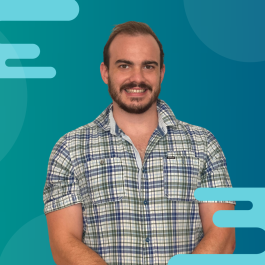“If you give a man a fish, you feed him for a day; teach a man to fish and you feed him for a lifetime.”
The classic proverb imparts the wisdom that it is more worthwhile to give someone the tools they need to accomplish something for themselves than to do it for them on an ongoing basis. And if one imagines healthcare data to be the ocean, and insights to be the fish, they can understand why the newest product from healthcare data company Pareto Intelligence will be a boon to its customers.
Pareto Hub is scheduled to launch this year, and it offers the whole ocean of data to its clients alongside tools that allow them to fish out infinite insights for themselves. The product delivers disparate raw data assets via a self-service portal that goes a step beyond data visualizations and reports. Hub will allow users to make quick deep dives into their own data and transform those insights into action.
“Even in the most minimal state, the raw data given to us by the government is hard to work with, but the lowest level insights can be huge,” said Ethan Spalding, a data scientist on the team. “Our latest project is opening that up and giving access to data at all levels of processing, in a clean and organized state that runs faster.”
Pareto Hub will not only break down silos between customers and consultants, but the development of Pareto Hub has boosted collaboration within the company. With the impending product launch, Built In Chicago connected with Spalding and a cross-functional team at Pareto Intelligence for an inside look at how a culture of collaboration has anchored the company’s latest product in the face of industry change.
Describe the industry landscape. What makes Pareto Intelligence unique in this market, and what is your latest product, Pareto Hub, bringing to bear?
Group Project Manager Tracy Delgado: There are a lot of industry buzzwords such as interoperability and real-time data access. In general, healthcare technology and tools have significantly decreased the time it takes to deliver care. You are seeing a lot of plans and health systems move toward more advanced technologies, so the days of Excel and Access databases are waning as we move to cloud-based infrastructure, which is very exciting.
With Pareto Hub, we are starting in risk adjustment and the Medicare Advantage market. There is going to be a greater need for this because a lot more people are aging into Medicare and they’re enrolling in Medicare Advantage versus traditional Medicare in larger numbers. The health plan and provider groups are taking on more risk, and it’s a very complicated program. They need to be able to optimize their interactions with their members and administratively adhere to best practices to reduce operational burden, inefficiencies and issues with payments.
Client Advisory Manager Austin Bostock: We strive to not be a black box. A lot of organizations take healthcare client data, use it, then give it back in the form of a PowerPoint presentation or workbook. But we try to be collaborative across the entire process. That’s one of the main reasons Pareto Hub came about. We have seen a shift to organizations being smarter with data. We have a lot of great technology that we’ve developed, and our goal is to democratize that data, not keep it close to our chest. We want to bring everyone along.
It sounds like there are a lot of silos to break down in terms of the data you are working with. How do you collaborate effectively?
Spalding: Due to the nuances of healthcare data, there is so much bureaucracy. Few people know everything about it or have all of the expertise necessary. It is integral to the process to have collaboration on the team, because I may not know something that another team member knows. I am a bit of a Swiss Army knife, but there are plenty of levels of engineering and development that I’m not an expert in. So I translate my expertise into information my engineering team can interpret and build on. It couldn’t happen without a team.
Bostock: We have a daily stand-up, which is the most tangible example of our collaboration. We have every corner of the organization represented every morning. A nice aspect of being a smaller organization is that there isn’t a lot of red tape. We can get into a room, physical or virtual, and hash things out in an ad hoc meeting.
At this stage of our Pareto Hub project, we have code reviews nearly every other day. We’re implementing code one day, and then we’re testing it the next. It took a bit to get into the rhythm, but we’ve figured it out.
Delgado: We’re using agile best practices a lot more by implementing scrum, but adapting it for our unique circumstances. We kicked off this product in a completely remote environment. We did a two-day kickstart with team-building activities to establish how we were going to communicate since we weren’t at our desks. We have changed our schedule probably three or four times throughout the project to accommodate changing needs.
Can you give me an idea of what the two-day project kickstart was like?
Delgado: We got to know each other and did lifecycle, agile and scrum overviews. We had a fun GIF challenge, talked about user stories, made a team agreement and estimated our work. We shared snapshots of things around our houses. We got into the work with a solution architecture overview and a user story brainstorming activity on Lucidchart with virtual sticky notes. Then we did a retrospective, which is a huge part of the sprint activity cycle. Every two weeks we sit down and talk about everything. It’s all documented on Confluence.
Spalding: Honestly, I was personally a little resistant to some of the scrum ceremonies because I’m not a person who likes to work in these structured boxes, but this was an eye-opening experience. I think that the ability to give honest feedback, both positive and negative, in these meetings has been very helpful for the team. This is a fully novel project, so we didn’t know how things were going to go, and things have gone wrong. That happens. The most important thing in those cases is to be honest and learn from those mistakes. The sprint ceremonies have helped keep track of development and the vision. It helps create a cohesive team focused on one goal.
Bostock: I came up in the consulting space, not the product space, so it was cool to take foundational time getting to know the team and how everyone communicates. The most important piece is the retrospective at the end of every two-week sprint. It’s an open, honest space with only our team. People air their concerns, thank each other and help explain things others don’t understand. It has been one of the more powerful drivers of our collaboration to provide a space for people, no matter their role, to be honest and keep everything documented.
Describe your latest product, Pareto Hub. What gets you excited about this work?
Spalding: Our new solutions will give more access to the data that will allow us to drill down deeper. In the past, we had people with expertise to individually trace that, but the data was too convoluted for the customer to get true insights. The granularity that we are going to be able to provide without writing expensive queries on our databases is unprecedented. Before, we could do ad hoc requests, but nothing repeatable. This allows us to do everything at scale and gives our clients the ability to search for those insights themselves.
Delgado: Risk adjustment is very complicated; it requires a lot of data to gain insights. We are trying to deliver it in a way that makes it easier to turn insights into actions. The product gives users the ability to access and synthesize data into insights without the heavy domain knowledge usually required to put it all together. Not only do you see pretty graphs and charts, but you go one layer deeper and get the data behind it to show you how this is happening.
As a product person, I find data is the thing that either makes the product or kills it. If you have crappy data going in, you are going to have crappy data coming out. It can be frustrating for users. I’ve seen products fail because creators don’t spend time thinking about how the data moves behind the scenes.
Bostock: We are changing how we interact with our clients and how they interact with their data. It’s nice to have pretty graphs or analytics from Power BI or whatever your visualization is, but clients will always have another, deeper question. We are offering not only visualizations but underlying data and the consumption model underneath that so that when the client comes to their advisory team with questions, instead of just creating another report for them, they can go in and look at the data with us. We can collaborate with them more, and it frees up our teams to be advisors.
The granularity that we are going to be able to provide without writing expensive queries on our databases is unprecedented.”
Do you have any examples of how people came together to solve problems during this process?
Bostock: When we would ideate something, we built off of the knowledge of subject matter experts. We’ve been very intentional about having the right people building the right things. We have held a lot of collaborative sessions where one person will say, “I need this feature,” and Ethan would say, “That’s great, but how do I do that?” And then I will put it in my layman’s terms, and Tracy will document it so we have a paper trail of what we’re doing. Especially now that we are close to the end, there’s a lot of revisiting or improving ideas we had a couple of months ago. It’s a lot of iteration between folks doing the analytics versus folks who are writing the code happening on a daily basis.
Spalding: We designed our consumption data model — the data we expect our clients to interact with — at the outset of this project. We had an idea of what our clients were going to want, and designed it so we had a North Star. Now we’ve put in months of development and over time that has led us to make a few updates to improve performance. We have that assumption layer that our clients will actually interact with, and I am filling out data in the models and giving it to Austin and the advisory team. They interact with the data and might realize, “Oh we thought we would want this data monthly, but it’s hindering us, so we think our clients would prefer the speediness of a less granular model.” So we designed a dimensional model that is the most reduced without actually losing any information. As good as our plans were at the beginning, these iterations have been exactly what we needed to get this to the finish line.
What would you want to share with someone considering joining this team?
Delgado: We are solving a very niche problem. But the overall process of taking data, synthesizing it and utilizing it in these cloud environments is very exciting. It’s newer stuff that not everyone gets to work on. People talk about big data and artificial intelligence. But actually synthesizing that and making it usable so that people can interact with it is really hard to do. We’ve done a very good job of that.
Bostock: When you join Pareto you have direct access to people like Ethan, who are going to take the time to make sure you’re getting questions answered and the training you need. We are small but we support a lot of clients, so there is room to grow and become a subject matter expert in the market. It’s a unique position, and it’s awesome being on a team where if you ask if someone has a minute they will rarely answer no. It’s such a collaborative team.
Spalding: I came to this company with no experience in healthcare. I worked in baseball analytics. I never used Python, which I now use every single day. This company has afforded me the ability to talk with and learn from smart people. If you run up against an issue, people will be patient with you and give you the ability to learn. If there is something novel that we want to learn and people at the company don’t know, the company affords us to pick up our skills in a way that can further our solutions. Being able to do that has been such a boon for me, and why I’ve enjoyed my job here. I appreciate learning and want to grow my skill set as much as I can, and that wouldn’t be possible without these people around me.











